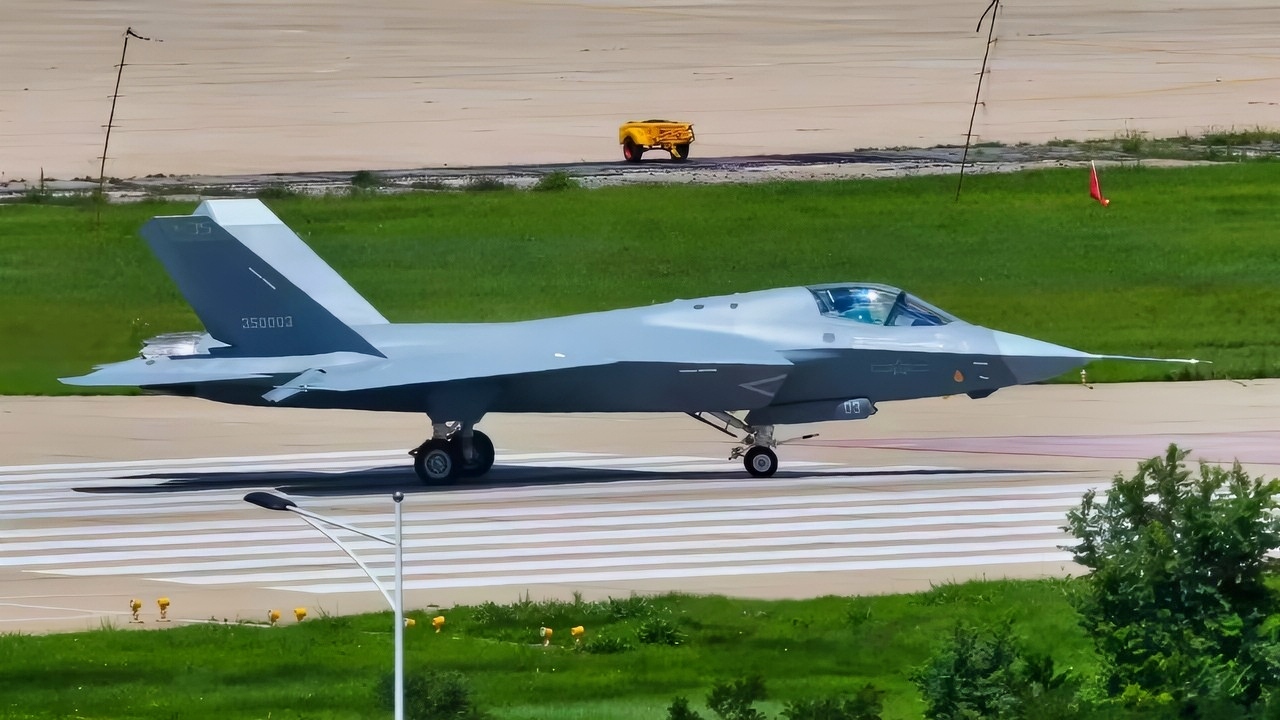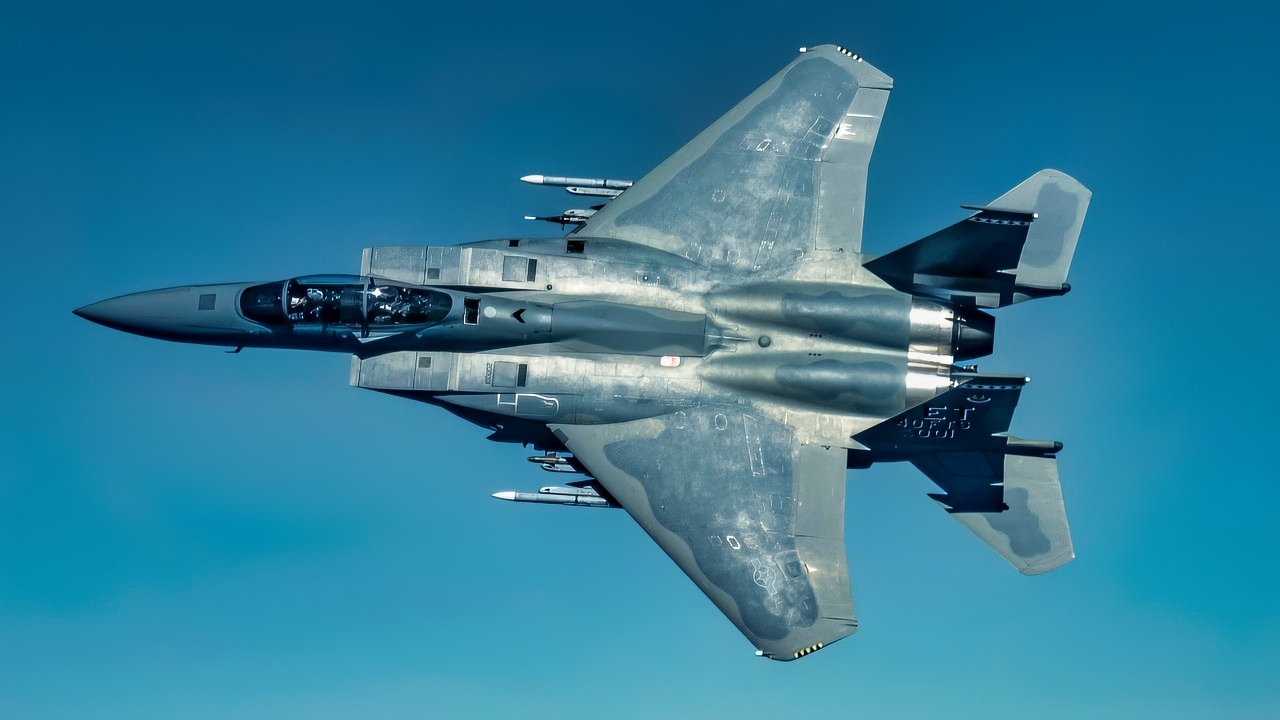PUBLISHED on August 8, 2025, 11:12 AM EDT – Key Points and Summary – In a hypothetical matchup, the 4.5-generation F-15EX Eagle II faces China’s 5th-generation J-35 stealth fighter.
-The F-15EX Eagle II boasts numerous on-paper advantages, including superior speed, range, service ceiling, and a massive missile payload.

An F-15EX Eagle II, assigned to the 142nd Wing, taxis on the flightline before take-off during the official Unveiling Ceremony for the new fighter jet at the Portland Air National Guard Base, Oregon on July 12, 2024. The 142nd Wing will be replacing the F-15 C/D model Eagles with the new F-15EX Eagle II models. (National Guard photo by John Hughel, Oregon Military Department Public Affairs)

A U.S. Air Force F-15EX Eagle II, assigned to 85th Test and Evaluation Squadron, Eglin Air Force Base, Florida, lands at Kadena Air Base, Japan, July 16, 2025. The F-15EX plays a critical role in modern warfare, providing substantial additional capacity for long-range fires, sensors, and electronic warfare in contested areas, complementing 5th generation fighters. (U.S. Air Force photo by Airman Nathaniel Jackson)
-However, the J-35 possesses the single most critical advantage in modern air combat: stealth.
-This “see-first, shoot-first” capability would allow the Chinese jet to engage the Eagle II from beyond visual range, likely before the F-15EX pilot is even aware of the threat.
-The J-35 would win the fight.
Face Off With the J-35 vs F-15EX Eagle II
With the People’s Republic of China’s endless acts of belligerence toward the United States of America’s allies in the INDOPACOM region—particularly Taiwan, the Philippines, Japan, and Australia—there is a very real possibility that the region will serve as the flashpoint for World War III.
In case of such a nightmare scenario, many prognosticators examine the aerial component of such a conflict in terms of a stealth fighter vs. stealth fighter air war, i.e., the American F-22 and F-35 vs. the Chinese J-20 and J-35.
However, neither side has switched exclusively to 5th-generation stealth fighters yet, so if the war were to break out tomorrow, hypothetically, there would inevitably be battles between 5th-generation fighter jets on the one side and 4th and 4.5th-generation fighter jets on the other side. Accordingly, National Security Journal now presents one such theoretical head-to-head intergenerational warbird clash: the US-made Boeing F-15EX 4.5 Generation fighter vs. the PRC’s J-35 stealth plane.
So then, who would win in a hypothetical clash between these two mighty warbirds?
J-35 Advantages
The most glaring advantage of the Chinese fighter is its stealth. As impressive as its American adversary truly is, the F-15EX does not have stealth capability. Indeed, the Eagle II’s large dimensions—as in a fuselage length of 63.8 feet (19.5 meters), wingspan of 42.8 feet (13.1 meters), and height of 18.5 meters (5.7 meters)—equate to a large radar cross section (RCS) that’s easily detected from beyond visual range (BVR). In other words, the J-35’s pilots would be able to see first and strike first before the F-15EX’s pilots even know it’s there.

J-35 Fighter Screenshot. Image Credit: YouTube Screenshot.

J-35A Fighter at Le Bourget Air Show. Image Credit: National Security Journal.
As noted by Army Recognition, “The J-35A is a low-observable fighter that combines stealth shaping with aerodynamic efficiency. It features a blended wing-body configuration with carefully canted twin vertical stabilizers and trapezoidal mid-mounted wings. The fuselage is designed for internal weapons carriage to minimize radar signature, and its structure incorporates radar-absorbent materials across key surfaces. The diverterless supersonic inlets (DSI) further reduce the radar cross-section while optimizing airflow into the engines.”
F-15EX Eagle II Advantages
Despite its heavier weight, the Eagle II is still the faster of the two warbirds, with a max airspeed of Mach 2.42 (1,854 mph, 2,983 km/h, 1,611 knots), leaving the J-35 in the dust at a comparatively plodding Mach 1.8 (1,381 mph, 2,222 km/h, 1,200 knots). As the fighter pilot’s motto goes, “Speed is life.”
The Eagle jet also has a more powerful engine, as the General Electric GE F110-GE-129 afterburning turbofans generate 29,500 lbf (131 kN) of afterburner thrust, compared with the Shenyang’s Guizhou WS-21 afterburning turbofan engine (which in turn is a heavily improved version of the earlier WS-13 “Taishan)”, whose output is a comparatively weaker 19,600–21,000 lbf (87.2–93.2 kN) with afterburner.
That American GE engine is also more fuel-efficient, giving it a range of 2,485 miles (4,000 km), whilst the Guizhou runs out of gas after a mere 780 miles (1,250 km) on internal fuel; even with the addition of aerial refueling or external fuel tanks, the J-35’s range is extended to just 1,200 miles (1,931 km).
The Eagle II is the higher flyer, with a service ceiling of 59,055 feet (18,000 meters), which gives it a hypothetical ability to pounce from above upon the lower-flying J-35, whose service ceiling tops off at 52,000 feet (16,000 meters).
Armament-wise, the F-15EX also benefits from having more proverbial arrows in its quiver; a whopping capacity of up to 22 (yes, twenty-two!) air-to-air missiles, whilst the J-35 carries 12 AAMs at most (divvied between a half-dozen internal hardpoints inside the weapons bay and an additional six external hardpoints on the wings. In other words, in a prospective prolonged dogfight, the American fighter will still be in the fight long after the Chinese challenger has run out of missiles, which segues to another arsenal advantage of the American plane: a gun. The Eagle jet wields a 20 mm (0.787 in) General Dynamics M61A1 Vulcan 6-barreled Gatling cannon along with 500 rounds of ammo, whilst the J-35 (just like the Chengdu J-20) omits a cannon altogether (so much for the philosophy of “Better to have and not need than vice versa”).

J-35 Fighter X Screenshot. Image Credit: X Screen Capture.
The Boeing bird currently has the advantage of sheer production numbers and operational status, and as the saying goes, “Quantity has a quality all [of] its own.” The Eagle II went operational in July 2024, and 144 airframes have been built thus far. By contrast, only an estimated eight or so specimens of the Shenyang plane have been produced to date. Moreover, it’s somewhat ambiguous as to whether it has even advanced from prototype to production phase just yet (the first prototype made its maiden flight on 31 October 2012).
In addition to the technical aspects, there’s an intangible factor to consider: experience counts, as in real-world combat experience. Though the Eagle II variant specifically hasn’t been used in combat, it’s the latest & greatest iteration of the deadliest and most accomplished fighter jet of all time, boasting an mind-boggling 104 to 0 kill ratio. Meanwhile, the J-35 and its pilots are totally untested in combat (as is also true of the J-20), which is unsurprising when you remember that China hasn’t been in a major shooting war since the 1979 Sino-Vietnamese War.
And the Winner Is…?
Unfortunately, despite the F-15 Eagle II’s many great attributes and on-paper advantages, I would still have to go with the J-35 in a one-on-one matchup due to its see-first, shoot-first capability. Yes, the Eagle jet has never been shot down in air-to-air combat, but nothing lasts forever.
The United States would need its stealth fighters to truly put it on equal footing with the J-35 once the latter achieves full production numbers and operational status. (And it also underscored the sense of urgency to get the F-47 NGAD up and running sooner rather than later, which makes the current labor strike by Boeing’s St. Louis-based employees just that much more concerning.)
About the Author: Christian D. Orr, Defense Expert
Christian D. Orr is a Senior Defense Editor. He is a former Air Force Security Forces officer, Federal law enforcement officer, and private military contractor (with assignments worked in Iraq, the United Arab Emirates, Kosovo, Japan, Germany, and the Pentagon). Chris holds a B.A. in International Relations from the University of Southern California (USC) and an M.A. in Intelligence Studies (concentration in Terrorism Studies) from American Military University (AMU).
Defense Watch
F/A-XX Is the YF-23 on a Carrier?











Kevin
August 10, 2025 at 9:05 pm
A major factor omitted in this article is pilot quantity, quality, experience, and ability. You could have the best, most capable aircraft ever produced, butt if the pilot has no real experience, and low numbers that have actually experienced/flown the aircraft in question, the pilot can make all the difference.